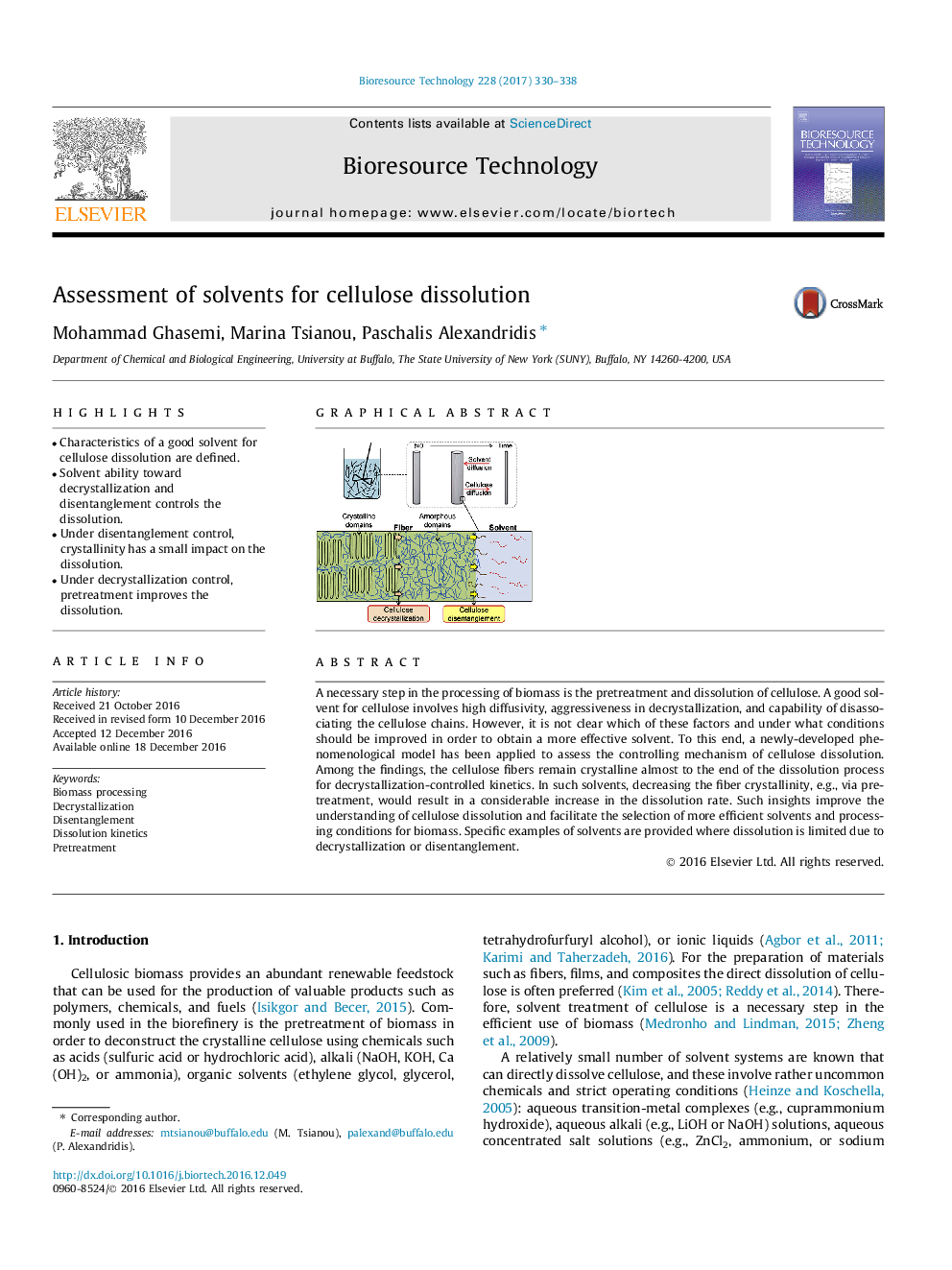| کد مقاله | کد نشریه | سال انتشار | مقاله انگلیسی | نسخه تمام متن |
|---|---|---|---|---|
| 4997763 | 1459915 | 2017 | 9 صفحه PDF | دانلود رایگان |
• Characteristics of a good solvent for cellulose dissolution are defined.
• Solvent ability toward decrystallization and disentanglement controls the dissolution.
• Under disentanglement control, crystallinity has a small impact on the dissolution.
• Under decrystallization control, pretreatment improves the dissolution.
A necessary step in the processing of biomass is the pretreatment and dissolution of cellulose. A good solvent for cellulose involves high diffusivity, aggressiveness in decrystallization, and capability of disassociating the cellulose chains. However, it is not clear which of these factors and under what conditions should be improved in order to obtain a more effective solvent. To this end, a newly-developed phenomenological model has been applied to assess the controlling mechanism of cellulose dissolution. Among the findings, the cellulose fibers remain crystalline almost to the end of the dissolution process for decrystallization-controlled kinetics. In such solvents, decreasing the fiber crystallinity, e.g., via pretreatment, would result in a considerable increase in the dissolution rate. Such insights improve the understanding of cellulose dissolution and facilitate the selection of more efficient solvents and processing conditions for biomass. Specific examples of solvents are provided where dissolution is limited due to decrystallization or disentanglement.
Figure optionsDownload high-quality image (101 K)Download as PowerPoint slide
Journal: Bioresource Technology - Volume 228, March 2017, Pages 330–338
